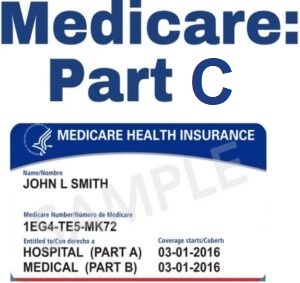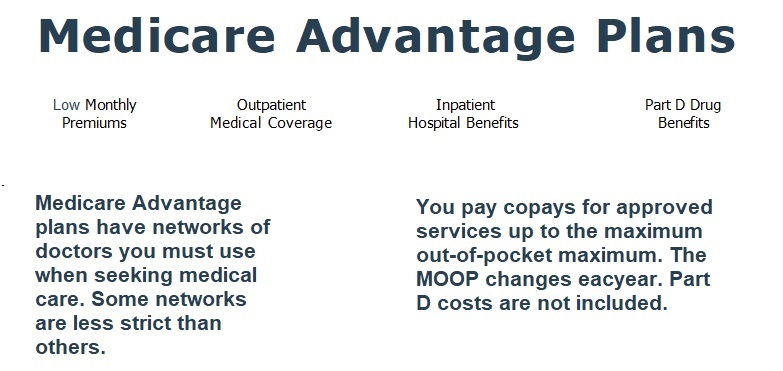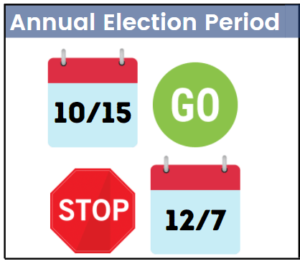 Medicare Advantage plans were established through the enactment of the Balanced Budget Act of 1997 and were officially endorsed by President Bill Clinton. These plans are widely referred to as Part C of Medicare. Certain medical practices may also refer to them as replacement plans, as explained further below. Congress created this program with the intention of providing Medicare beneficiaries with an alternative option that offers lower premiums compared to Medigap.
Medicare Advantage plans were established through the enactment of the Balanced Budget Act of 1997 and were officially endorsed by President Bill Clinton. These plans are widely referred to as Part C of Medicare. Certain medical practices may also refer to them as replacement plans, as explained further below. Congress created this program with the intention of providing Medicare beneficiaries with an alternative option that offers lower premiums compared to Medigap.
Consequently, these plans serve as a coverage alternative for individuals who have missed their open enrollment period for Medigap and are now unable to qualify for it due to their health conditions. Medicare Advantage plans, also referred to as MA, differ from Medigap plans in several ways. Instead of receiving benefits from Original Medicare, members receive their benefits from a private insurance company. It is worth noting that these plans are sometimes called Medicare replacement insurance. Medicare does not particularly favor this language due to its lack of complete accuracy. When you enroll in a Medicare plan, you are not completely replacing your Medicare coverage. Rather, you are simply opting to receive your benefits from a private company for the remainder of the calendar year.
How Medicare Advantage Works
A Medicare Advantage plan serves as an alternative means to receive your Part A and Part B benefits, provided by private Medicare insurance. By enrolling in this plan, Medicare will allocate a monthly fee to the plan for administering your Part A and B benefits.
While being enrolled in your Medicare Advantage plan, it is crucial to maintain your enrollment in both Medicare Part A and B. Medicare will compensate the Advantage plan company on your behalf to assume your medical risk, ensuring the funding of Medicare Advantage plans.
During your treatment, you will need to present your Advantage plan ID card. Instead of billing Original Medicare, your healthcare providers will bill the plan directly. This is why some providers refer to these plans as Medicare replacement plans. However, it is important to note that you always have the option to return to Original Medicare during a future annual election period.

Each Advantage plan provides a comprehensive summary of its benefits. This summary outlines the copays you will need to pay for different healthcare services. Similar to Original Medicare, your plan will cover a wide range of services including doctor visits, surgeries, lab work, and more.
For a primary care doctor visit, you may have a copay of $10. However, copays for specialists are typically higher, with $50 being a common amount. Diagnostic imaging, hospital stays, and surgeries may also have higher copays.
Typically, you can expect to spend several hundred dollars on copays for these services. It’s important to note that copay amounts can vary significantly between states, so it’s advisable to review plans specific to your area.
One great advantage of Medicare Advantage plans is that some of them offer additional benefits for routine dental, vision, or hearing care. Some plans even include gym memberships. If you’re looking for Medicare Advantage plans with dental and vision coverage, our team of experts at Cindy’s Health Insurance Services can assist you in comparing these extra benefits offered by different carriers.
Medicare Advantage Networks
In order to enjoy the lower premiums offered by Advantage plans, there are certain rules that you must abide by. The majority of Medicare Advantage plans operate within HMO or PPO networks.
For Medicare HMO networks, it is generally required that you receive treatment from network providers, unless it is an emergency situation. You will typically need to choose a primary care physician who can coordinate referrals to specialists if necessary. Some HMO plans do offer a point-of-service feature that allows you to see out-of-network providers in specific circumstances.
Medicare HMO plans are the most common type of network. According to a study conducted by Mark Farrah associates, they will make up 71% of all Medicare Advantage plans available in the market.
On the other hand, Medicare PPO networks provide the flexibility to see doctors outside of the network. However, you will have higher out-of-pocket expenses for doing so.
In certain counties, there are Medicare Private-Fee-for-Service plans available. These plans may or may not include Part D coverage. The way you access care with these plans is also different. While this plan type used to be widespread in the past, it has gradually been phased out in most areas. You can find more information about Medicare PFFS plans here.
Medicare Advantage Rules
To be eligible for Medicare Advantage, it is essential to be enrolled in both Medicare Part A and Part B, and reside within the plan service area. It is a common misconception that enrolling in Medicare Advantage allows individuals to drop Part B. However, this is incorrect. If you choose to drop Part B while enrolled in Medicare Advantage, you will be immediately disenrolled from your Medicare Advantage plan.
To ensure the lowest out-of-pocket costs, it is advisable to utilize network doctors and hospitals. Medicare Advantage plans typically offer either HMO or PPO networks. It is important to note that most Medicare HMO plans do not cover any services obtained outside of the network, except in emergency situations. On the other hand, if you seek care from a provider outside of the PPO network, you can expect higher expenses.
Certain procedures may require prior authorization when it comes to Medicare Advantage plans. It is recommended to check with your plan regarding any specific procedures that may require prior authorization.
For many HMO plans, it may be necessary to obtain a referral from your primary care physician before seeing a specialist. This referral process ensures that you receive appropriate care within the network.
Ensure the safety of your red, white, and blue Medicare card by storing it in a secure location. Refrain from handing it over to any healthcare providers as they are not authorized to bill Medicare. Any attempts to do so will result in the rejection of those bills, as they should have been sent to your Medicare Advantage insurance company for proper processing.
It is crucial that you instruct your healthcare providers to bill your Medicare Advantage plan instead. By enrolling in Advantage plans for Medicare, individuals are consenting to be covered by the plan for the entire calendar year, replacing Original Medicare.
Medicare Advantage Enrollment Periods
 Medicare Advantage plans come with lock-in periods, which means that there are specific times when you can enroll or dis-enroll from these plans. The Initial Enrollment Period is when you first turn 65, and during this time, you can enroll in a Medicare Advantage plan. However, after this period, you can only make changes to your enrollment during certain times of the year. Once you have enrolled in a Medicare Advantage plan, you are required to stay enrolled for the entire calendar year. Dis-enrollment from an Advantage plan is only allowed during specific times of the year, unless you meet the criteria for a special enrollment period due to a specific circumstance.
Medicare Advantage plans come with lock-in periods, which means that there are specific times when you can enroll or dis-enroll from these plans. The Initial Enrollment Period is when you first turn 65, and during this time, you can enroll in a Medicare Advantage plan. However, after this period, you can only make changes to your enrollment during certain times of the year. Once you have enrolled in a Medicare Advantage plan, you are required to stay enrolled for the entire calendar year. Dis-enrollment from an Advantage plan is only allowed during specific times of the year, unless you meet the criteria for a special enrollment period due to a specific circumstance.
The fall season brings the Annual Election Period, which is the prime time to modify your Medicare Advantage plan. This period spans from October 15th to December 7th every year, and any alterations made to your enrollment during this time will become effective on January 1st. If you choose to discontinue your Medicare Advantage Prescription Drug (MAPD) plan and switch back to Original Medicare, it is essential to inform your Medicare Advantage plan provider. Failure to do so will result in Medicare still reflecting your enrollment in the Advantage plan rather than Original Medicare.
Medicare Advantage Open Enrollment Period
Some individuals choose to enroll in Medicare Advantage plans without conducting any research or seeking advice from an agent. As a result, they may be unaware of the various rules associated with these plans. It is not uncommon for them to discover that their doctor does not accept the plan they are enrolled in or that it does not cover their required medications. This situation often arises in January, following the Annual Election Period when individuals join a Medicare Advantage plan.
To address this issue, Congress established the Medicare Advantage Open Enrollment Period, which takes place from January 1st to March 31st each year. During this period, individuals have the opportunity to disenroll from their current Medicare Advantage plan and return to Original Medicare. They can also choose to add a standalone Part D drug plan.
However, it is important to note that this open enrollment period does not guarantee the ability to return to a previous Medigap plan. Unless it is the individual’s first time ever being enrolled in a Medicare Advantage plan, they will typically need to answer health-related questions and undergo medical underwriting to be approved for Medigap coverage again. It is crucial to consider this before deciding to drop a Medigap plan in favor of Medicare Advantage.
Another option available during the Medicare Advantage Open Enrollment Period is to switch from the current Medicare Advantage plan to a different one. It is important to be aware that this period can only be utilized once per calendar year.
Medicare vs Medicare Advantage
The intent of Congress in creating these plans was to give you options for accessing your Medicare benefits. Some reasons why people might choose an Advantage plan are:
- Many plans have low monthly premiums (although you must continue to pay your Medicare Part B premium )
- You pay for medical services as you use them in the form of copays and coinsurance.
- Unlike Original Medicare, Medicare Advantage plans have an out-of-pocket maximum cap to protect you against catastrophic spending.
- The convenience of having your medical and Part D drug benefits rolled into one plan. Advantage plans with drug coverage are known as MAPDs.
- Some plans may include benefits for things like limited vision coverage. Limitations, copayments, and restrictions may apply.
Remember, it’s a personal choice – there is no right and wrong. Consider Original Medicare vs Medicare Advantage based on your own knowledge of your medical usage.
Medigap vs Medicare Advantage
Original Medicare combined with a Medigap plan provides extensive coverage. One key advantage of Medigap plans is that you have the freedom to choose any doctor who accepts Medicare, without having to inquire about their acceptance of your specific Medigap insurance company. The network of providers is Medicare itself, which boasts over 1 million contracted providers nationwide.
Additionally, certain Medigap plans offer more comprehensive coverage on the backend. While Medicare covers 80% of the costs, your Medigap plan can cover some or all of the remaining 20%, depending on the plan you select. This significantly reduces your out-of-pocket expenses. For instance, beneficiaries with a Medigap Plan G can avoid repetitive copays at the doctor’s office that they may encounter with a Medicare Advantage plan.
However, it’s important to note that Medigap plans do not include Part D coverage for prescription drugs. Therefore, you will need to purchase a separate Part D policy. Furthermore, Medigap plans do not provide routine dental, vision, or hearing coverage, whereas certain Medicare Advantage plans may offer limited coverage in these areas.
Additional Factors to Consider for Medicare Advantage Plans.
Before joining a plan, it is important to carefully consider the following factors:
1. Provider Acceptance: Not all hospitals and doctors accept Advantage plans. It is advisable to consult your agent and verify whether your medical providers accept the plan you are interested in.
2. Annual Changes: Advantage plan benefits can change every year. In September, you will receive a packet from your Part C insurance company informing you about the upcoming changes. These changes may include modifications to the plan’s benefits, formulary, pharmacy network, provider network, premium, co-payments, and co-insurance. It is crucial to review this annual packet diligently and communicate any concerns to your agent.
3. Enrollment Duration: Once enrolled, your participation in an Advantage plan generally lasts for the entire year. Dis-enrollment from the plan is only possible during specific times of the year. For instance, if you decide in April that you are dissatisfied with the plan, you will have to wait until the following annual election period in October to make changes, unless you qualify for a special election period.
4. Long-Term Coverage: If you choose to enroll in an Advantage plan at age 65, it is essential to consider whether you want this coverage for the long term. Your open enrollment window to obtain a Medigap plan without answering health questions ends 6 months after your Part B effective date. If you have health conditions and apply for Medigap later, you may be required to answer medical questions. Depending on your health status, you could be denied Medigap coverage at that point.
Please take these factors into account before making a decision about joining a plan.
Do you pay the Part B premium with Medicare Advantage?
Before you can add on an Advantage plan, it is necessary for you to enroll in both Medicare Parts A and B. This requirement remains valid, even if the Advantage plan itself has a $0 premium. Each month, you will still be responsible for paying your Part B premium to Medicare.
How do Medicare Advantage plans manage to be offered at no cost?
Medicare Advantage plans do not come without a cost. While certain plans may have a $0 premium, this only implies that you won’t have to pay for the plan itself. However, you will still be responsible for paying the Part B premium to Medicare, as well as deductibles, copays, and coinsurance when utilizing your benefits.
Upon enrolling in a Medicare Advantage plan, the insurance company providing the plan receives a monthly fee from Medicare to assume all your medical risks. This is why certain plans can offer a $0 premium, as they are already being compensated by Medicare on your behalf.
What is a MAPD?
A Medicare Advantage Prescription Drug plan, also known as MAPD, is an Advantage plan that provides both medical and prescription drug coverage. On the other hand, Advantage plans that do not include drug coverage are referred to as MA.
Takeaways
Even if you have an Advantage plan, it is still necessary for you to pay the Medicare Part B premium. Most Advantage plans come with integrated Part D coverage. These plans are commonly referred to as Medicare Advantage Prescription Drug (MAPD) plans and are often called “all-in-one” plans. Advantage plans operate in a distinct manner compared to Original Medicare and Medigap plans. If you are contemplating an Advantage plan, it is crucial to comprehend their nature.
 Mario Arce
Mario Arce
I have been working with Medicare clients since 2016. I serve California members in San Bernardino & Riverside county.


